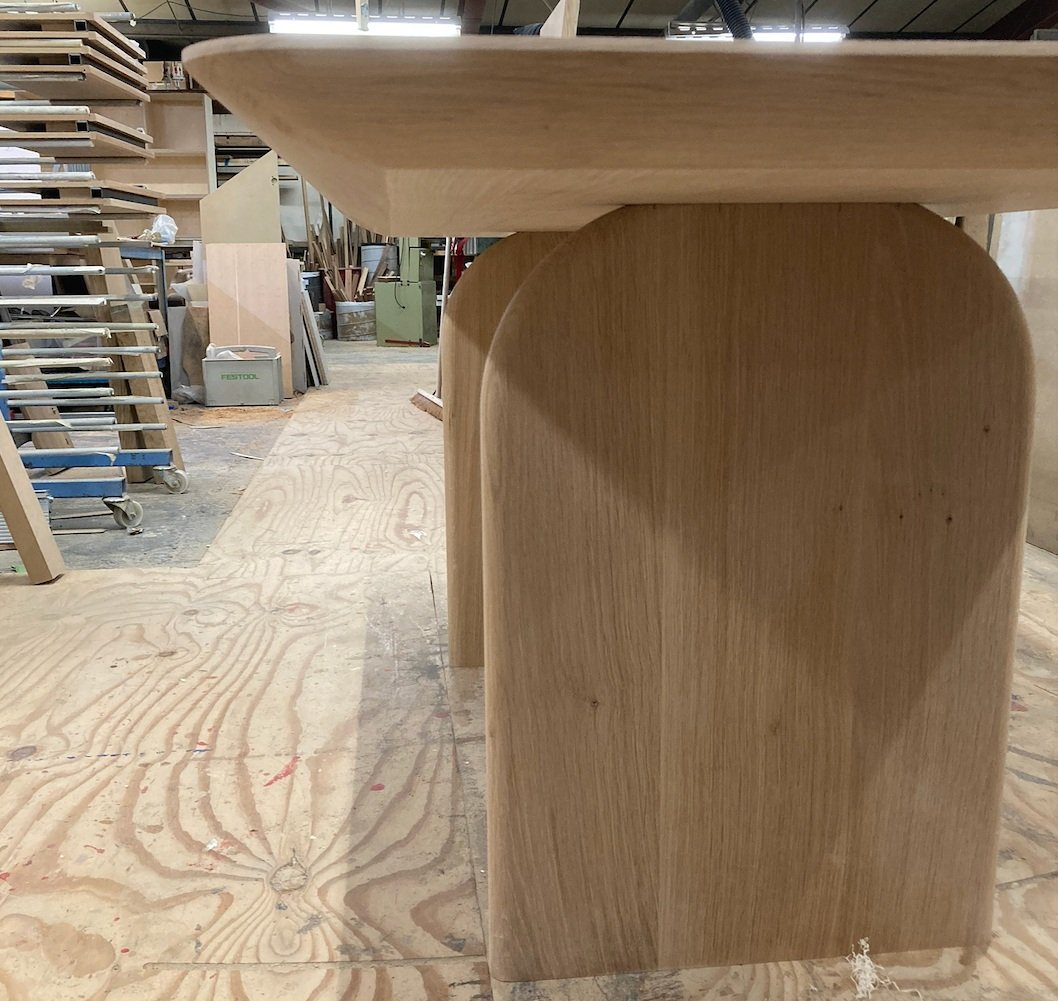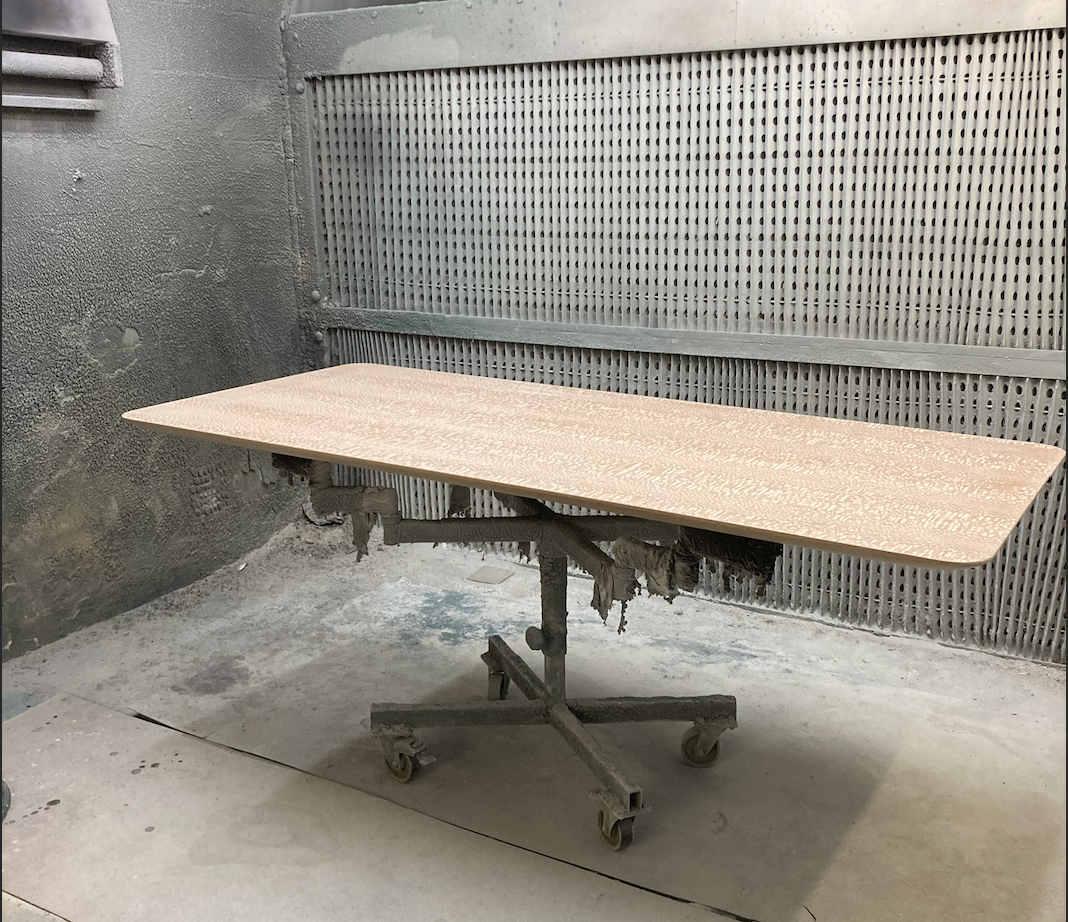Dinning table case study
This bespoke dining table was commissioned for a contemporary London apartment, designed to feel clean, sculptural and quietly elegant.
The tabletop was constructed around a 50mm MDF core — selected for its stability and resistance to movement — to avoid any risk of the veneered surface cracking or lifting over time. The outer edges were mitred and wrapped in solid oak to give the appearance of a thick, solid top without exposing end grain. We then applied a continuous oak veneer across the surface, avoiding joins to maintain a clean, uninterrupted grain pattern.
This shows the underside of the table and mitred ends
Every visible edge on the table, including the top and pedestal legs, was gently shaped and softened. This subtle detail gives the piece a more elegant and refined feel, while also enhancing its tactile quality in use.
The legs were CNC-machined from solid oak to achieve perfectly symmetrical curves, then hand-finished for precision and smoothness. They were also designed to be removable, allowing the table to be delivered and assembled with ease in tighter spaces.
CNC shaping the under side of the table top
To preserve the pale tone of the oak and prevent yellowing, we used a custom clear spray lacquer with a touch of white pigment — providing lasting protection while maintaining the timber’s natural appearance.
The table top in the spray room getting clear coat of lacquer.
The finished piece balances craftsmanship with practicality — bold in presence, yet warm and understated in design.







